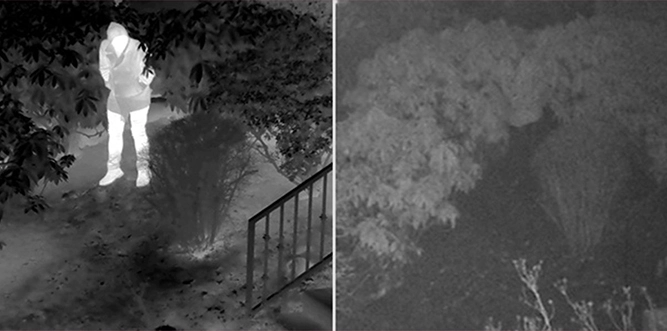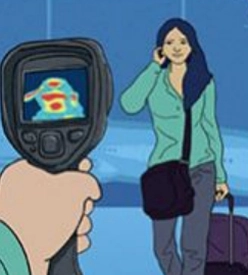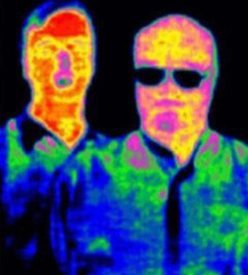A person's or an object's heat is detected by thermal imaging cameras. These cameras have lenses like visible light cameras do, but the thermal imaging lens directs the infrared energy waves it detects onto a collection of infrared sensors. Through the array's thousands of sensors, the infrared energy is transformed into an electrical signal, resulting in a video image. The temperature of the object or person captured by the thermal imaging camera is then compared to the temperature of the surrounding environment to create a "thermal profile," which is then measured and displayed.
The difference between night vision and thermal imaging is very clear. Night vision cameras work just like your eyes. Night vision cameras can magnify the objects you see through the camera to a large extent. However, if there is not enough light source, it is impossible for a night vision camera to capture an image of something.
Thermal imaging, on the other hand, does not rely on visible light; all a thermal imaging camera can see and detect is the heat emitted by an object or person. Whether it is daylight or light, thermal imaging measures the surface temperature of an object and converts it into an image.
Night vision cameras or scopes are ideal for use at night, but shadows or dust can have a significant impact on night vision cameras, and camouflaged objects or animals can be difficult to detect with night vision cameras or scopes.
Land System
Marine System
Airborne System
Border Coastal Surveillance System
Counter-UAS
Security System
Security VMS Software
Inspection cameras are widely used in industrial production, such as in petrochemical, electric power, steel, construction, medical industry, etc.
In the power industry, it detects equipment working under high temperatures and pressure to eliminate hidden problems and improve production efficiency.
In petrochemical and environmental industries, thermal imaging can be used to detect gas leaks.
In the medical field, thermal imaging cameras can be used to diagnose superficial tumors, blood vessels, skin diseases, etc.
In security, it can detect crimes due to its covert detection function without visible light. In important units such as administrative centers, bank vaults, military sites, prisons, etc., infrared cameras are often used for 24-hour surveillance, and once anomalies are detected, alarms are issued in a timely manner.
Intrusion detection: refers to the sudden invasion of a moving object to a certain area or crossing a certain boundary, sometimes called "out-of-bounds detection", "crossing alarm" and so on.
Moving object detection: refers to the discovery of moving objects in a certain area
Wandering detection: refers to the detection of moving objects that constantly move and linger for more than a predetermined time within a specific area
Stationary object detection: refers to the behavior when the target that was originally in a moving state suddenly stops and is in a stationary state for more than a preset. This detection function can be used in traffic can be called "parking detection", "vehicle dispatch detection", etc.
Object detection: mainly used to detect suspicious items abandoned in public places, which is a typical application of counter-terrorism.
The direction of motion detection: refers to the detection of objects moving in a specific direction or angle. There are fewer products with this detection function.
Motion path detection: refers to detecting whether the moving object is moving in a certain direction along a certain path. This is a common detection function, which can be implemented in almost every product, but the way to achieve it is different, some use tripwire detection, and some use area detection.
Crowd density detection: the crowd in a specific area (sometimes also for the density of vehicles can also be qualitatively detected, not a quantitative count, but only to obtain a congestion estimate, in order to automatically detect and alarm the congestion behavior from a macro perspective.
Fire inspection: detect whether there is thick smoke, flame, etc.




